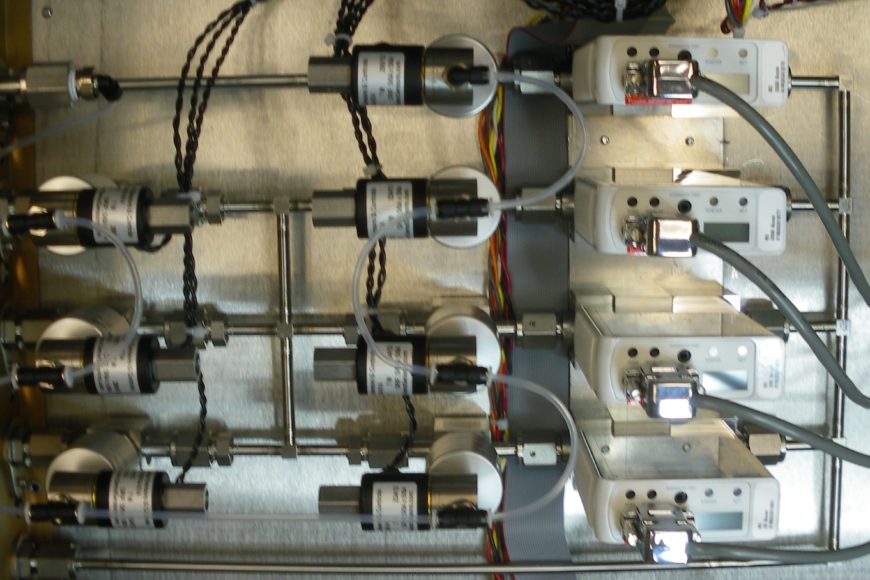
Gas chromatography (GC) is a workhorse technique used to separate, identify, and quantify chemical compounds contained in a carrier gas. It is renowned for its accuracy and repeatability, but—as with any tool used to determine quantity values under set conditions— the quality of GC results depends upon operators carrying out precise gas calibration to guarantee that measured signals accurately correspond to key properties of interest.
Regular maintenance of GC instrumentation should include checks on injection liners, gas pressures, inlet filters, and baseline signal levels. The frequency of mandatory gas calibration will obviously depend on the degree of usage, but it makes sense to have a routine programme involving regular checks including analytical and methodological gas calibration.
This blog post is a step-by-step guide to carrying out precise gas calibration and ensuring that measured values accurately correlate to accepted measurement standards.
1. Run Your Gas Stream
The first step is switch on your GC instrument and run your gas stream. You may be using pre-mixed gas cylinders or an on-line gas mixer. In either instance, connect the output/s to the GC injector and adjust the pressure accordingly.
2. Compare Setpoint to Observable Flows
Next, check the flow rate of your carrier gas at different rates against the predefined setpoint. The time it takes for components in a carrier flow to pass through the packing medium (rT) is a crucial parameter in precise gas calibration.
3. Validate Flow Rates
Once you have compared the various flow rates to the detector setpoints, you can begin to validate them against various acceptance criteria. It is particularly important to calibrate detector gas flows as inaccurate flow rates can make it difficult to ignite flame ionization detectors (FID).
4. Run Dilutions
After your precise gas calibration parameters have been established, you can start running dilutions of the compound/s of interest to check detector response times against concentration. This sort of linear regression modelling is crucial to the construction of accurate calibration curves.
5. Construct Calibration Curves
Gas chromatograms are based on predictive modelling because they do not directly provide the property of interest. Instead, the property (i.e. concentration) is derived from the magnitude of a signal over time, thus it is important to plot the response times of detectors against the concentration of each analyte. This yields characteristic calibration curves which can be used to validate results.
Precise Gas Calibration with Environics
This article is meant to serve as a general overview of the steps taken in precise gas calibration for GC applications. If you would like to learn more about the Environics approach to GC gas calibration, or are interested in using precision gas mixers for your future calibration needs in order to reduce gas cylinders and cost, why not contact a member of the Environics team today?

